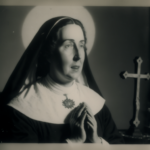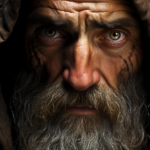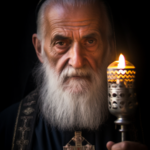St. Fabian
Saint Fabian
When they lived:
St. Fabian lived during the late 2nd and early 3rd centuries, specifically from around 200 to 250 AD.
Where they lived:
St. Fabian lived primarily in Rome, Italy, which was the center of the early Christian church during that time.
Notable world events during the time of their life:
- The Decian Persecution (250-251 AD): St. Fabian lived during a period of significant persecution against Christians under the Roman Emperor Decius. This event had a profound impact on the early Christian community and shaped its resilience.
- Growth of the Roman Empire: The Roman Empire was at its peak during St. Fabian’s time. Its vast expanse, cultural influence, and political power created a dynamic backdrop for the spread of Christianity.
- The Crisis of the Third Century: This was a period of political, economic, and military turmoil in the Roman Empire. It included frequent changes in leadership, civil wars, and external threats. The instability of this era affected various aspects of society, including religious communities.
- The Great Persecution (303-311 AD): While St. Fabian did not live through this period, it’s important to note that shortly after his death, another major persecution of Christians occurred under the Roman Emperor Diocletian, which significantly impacted the Christian faith.
- Scientific Progress: While not as well-documented as political events, there were scientific developments during this time, especially in fields like astronomy, mathematics, and engineering, that contributed to the foundation of later advancements.
Patronage:
St. Fabian is the patron saint of various important causes and groups, including:
- Potters: This patronage highlights his connection to craftsmanship and creativity. It’s an interesting facet that adds depth to his symbolism.
- Farmers: This underscores the importance of agriculture in the historical context and resonates with the simple and essential aspects of life that St. Fabian’s legacy embodies.
- Agricultural workers: Again, this emphasizes his connection to the land, labor, and the fundamental aspects of sustaining communities.
- People in authority: St. Fabian’s role as a pope and his commitment to the church’s mission can inspire those in positions of authority to lead with integrity and compassion.
- Papal authority: Given that St. Fabian served as pope and contributed to the early development of the papal office, he is a significant figure in the history of the Catholic Church’s leadership.
Early Life
The history of Saint Fabian before his papacy cannot be told in detail. What is known about him is gleaned from the biography of the church, which was written by Eusebius of Caesarea.
Saint Fabian, also called Fabianus, was born in Rome to a man named Fabian. Nothing is known about his mother or the early years of his life.
Saint Fabian was a layperson. After Pope Anteros died in 236, Fabian came to the city of Rome to witness the election of a new Pope.
Although Saint Fabian was a Christian, he was not an important member of the congregation. This has become an important part of history as his inclusion into the papacy came as a surprise.
During the Papal elections, the names of several distinguished members of the church came up in a debate. While the choice for who was distinguished enough to hold the seat of the office was still being considered, a dove descended upon Saint Fabian’s head.
The Church was shocked. This miraculous sign rang a bell about how Jesus was shown to be God’s only son. To the people who assembled to welcome the new pope, this was a spiritual sign.
Saint Fabian was immediately acclaimed pope.
Dedication and Devotion
Saint Fabian ruled the diocese for 14 years. During these years, the church experienced peace, led by a lull in the troubles from religious antagonists.
Saint Fabian was tolerated by the Emperors, who had formally tormented the Christian world during his predecessors’ time. His influence and respect helped him command the return of the bodies of Christian martyrs from Sardinia.
The most notable story about Saint Fabian was how he led the baptism of Emperor Philip and his son. Emperor Philip remained friendly with Christians, and the Persecution of the Christian Church was put to rest.
History reports that Saint Fabian sent out several Apostles to preach the gospel across the nation. Some of the places Saint Fabian made an appointment to Christianize are Tours, Arlens, Paris, and Clermont.
In his era as Pope, Saint Fabian built up the structure of the Church of Rome. He divided Rome into seven districts and assigned seven deacons of the church to each district. For every seven deacons, he appointed subdeacons to help in the building of the church.
These deacons he sent to retrieve the Acts of the Apostles or the Acts of the Martyrs. These documents were records of court proceedings during the trials of the Martyrs.
A tradition also stands that Saint Fabian installed the four minor clerical orders, namely the porter, lector, exorcist, and acolyte. This is, however, debated by many as a tradition that has slowly evolved over the years and the growth of the Church.
Some parts of history state that Saint Fabian did extensive work on the catacombs. In the catacombs, several notable individuals would be buried.
Legacy
The peaceful reign of Saint Fabian went on until the death of Emperor Philip. When Philip died, he was succeeded by Emperor Decius.
Emperor Decius commanded all Christians in Rome to offer rituals to to pagan idols and debt Christ or face persecution.
This command was unacceptable to many Christians. Emperor Decius singled out Saint Fabian as a means of cutting off the head of the Church in order to wipe Christianity out.
Death
Saint Fabian was Martyred on the 20th of January, 250 A.D. He was one of the earliest Martyrs killed by Emperor Decius.
Several historical accounts think that Saint Fabian was not executed but instead died in Prison. Many people, however, claim he was beheaded at Emperor Decius’ command.
Saint Fabian was initially buried in the Catacombs he helped rebuild with the inscription “Fabian, Bishop, Martyr”. His body was later moved to San Sebastiano Fuori le Mura.
Saint Fabian was canonized Pre-Congregation and is celebrated every year on the day of his death.
5 Interesting Facts About St. Fabian
- Did you know that Rome adopted Saint Fabian as its Patron Saint?
- Did you know that The Coptic Orthodox Church teaches that Saint
Fabian was martyred two times in one week. - Did you know that Pope Fabian’s relics were transferred to the
Church of Saint Sebastian in the early 1700s? They can still be
found there today. - Did you know that Saint Decius’ plan to end the Church by killing
Saint Fabian failed? 65 years after Saint Fabian’s death,
Constantine would legalize Christianity. - Did you know that Saint Fabian and Saint Sebastian are celebrated on
the same day?
Prayer to St. Fabian
God our Father, glory of Your priests, may the prayers of Your martyr Fabian help us to share his faith and offer you loving service. We ask this through Jesus Christ, Your Son, who lives and reigns with You in the unity of the Holy Spirit, one God, for ever and ever.
Source:[https://www.google.com/amp/s/prayers4reparation.wordpress.com/2013/01/01/short-prayer-to-st-fabian/amp/]{.ul}



